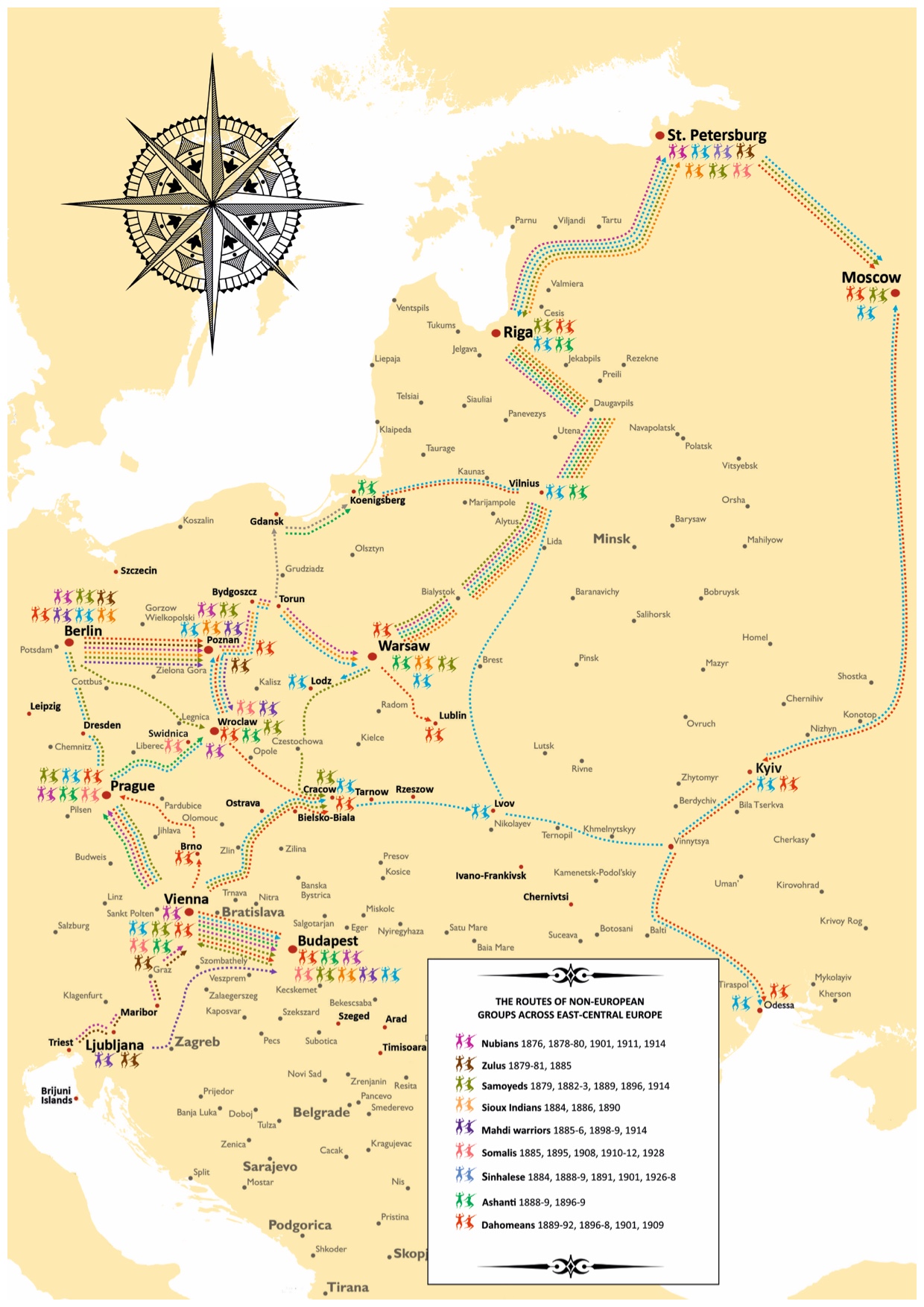LOCATING LIVING HUMAN DISPLAYS IN CENTRAL AND EASTERN EUROPE
Unlike Western colonial empires, the countries of Central and Eastern Europe (with the exception of Imperial Germany) had no overseas territories or the associated history and colonial experience inextricably connected with modernity. This does not mean that these states, continuously exposed to the ideas and reality of the ‘civilised’, progressive West, did not harbour any colonial ambitions or fantasies. The fact that these countries lacked their own colonies or sometimes even independence usually did not translate to criticism of colonial relations of power, or disapproval of the regimes of ‘truth’, representations and systems of classification and the hierarchisation existing within them. Ethnographic shows, which embodied the transformation of power-politics into spectacle, were one of the more important instruments of organising and expanding colonialist imagination in Central and Eastern Europe, as well as elsewhere. Although similar in many respects, the local reactions to ethnographic shows that made cultural differences visible were not always identical across regions or even cities. Part of the reason lay in the internal, local relations of power, different heritage and historical experiences, and dissimilar definitions of the exotic. The exhibition offers a Central- and Eastern-European perspective on ethnographic shows.
Map of the routes of non-European troupes across Central and Eastern Europe. Graphic design by Eliza Królak.
In the latter half of the nineteenth century and the first decades of the twentieth century, members of non-European groups recruited by the dynamically developing entertainment business were transported to Europe and back by boat. Most of the routes taken by these ‘exotic’ troupes across Central and Eastern Europe ran West to East, with very few exceptions, such as the Samoyeds who were brought to Europe via land routes running East to West. As far as ethnographic shows organised in Central and Eastern Europe are concerned, the two most important ports were Trieste and Hamburg. Since non-European people usually travelled through Europe by train, most of their tour routes followed major railway lines. There can be no doubt that the technological progress witnessed in the modern period was of paramount importance in the development of ethnographic shows. As the network of train lines became more developed with every passing decade of the nineteenth century, the phenomenon of ethnographic shows grew in scope, and the distance travelled by the groups increased accordingly. No strictly defined rules for transporting performance troupes across Europe existed at the time, which makes it harder to retrace the routes they took. In practice, non-European people often travelled in different directions along the same route. The direction was largely dependent on the starting point—that is, the port of arrival or (for example, in the case of the Samoyeds) the eastern city from which the troupe set off. Entrepreneurs were not bound by any specific principles in this respect. Thus, what counted was the expected profit, the existing infrastructure, and the network of connections with local businesspeople (for example, owners of zoological gardens), in which respect the Hagenbeck company was the uncontested leader. Although the first encounters between residents of Central and Eastern Europe and members of various non-European ethnic groups took place later than had been the case in Western Europe, existing data indicates that such contacts were numerous, while the network of cities organising such entertainment was vast.
![]()
Credits:
Dagnosław Demski, Institute of Archaeology and Ethnology, Polish Academy of Sciences; Dominika Czarnecka, Institute of Archaeology and Ethnology, Polish Academy of Sciences
